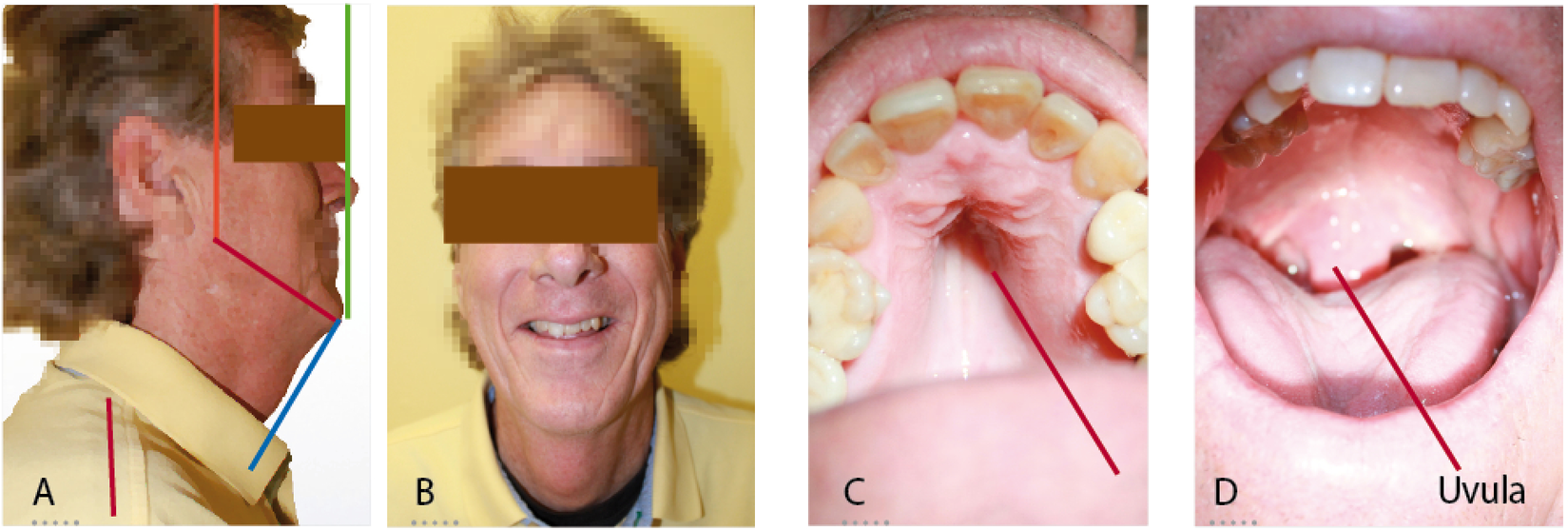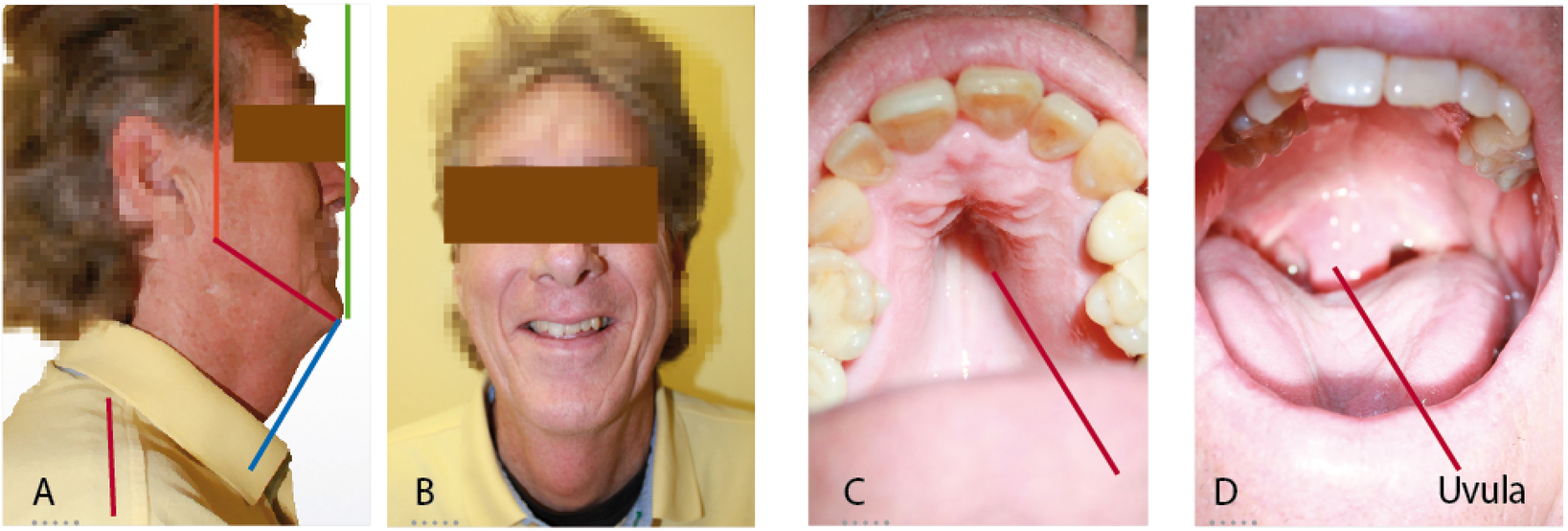Chapter 2
Understanding breathing
It is helpful to understand how breathing works, especially when the musician needs help with the process or when the pedagogue has to instruct or correct their student. However, when brass pedagogues talk about the breathing process, they mainly refer to the respiratory muscles in the torso in the physiological aspects of the process (Campos pp. 30-50, Nelson pp. 35-54, Steenstrup pp. 55-112). What is neglected is the consideration of the physiology of nose and mouth breathing; I believe that taking account of that into our breathing choices on the instrument would also prove to be beneficial. It is for this reason that I investigate the physiological impacts of different ways of breathing without taking the instrument into account first.
That being said, it is, however, not within the scope of this research to document all of the physiological impacts of nose and mouth breathing; the list will be limited to those that have a closer relationship to trumpet playing. Furthermore, it is also important to recognize that the majority of people do not breathe exclusively only through the mouth or only through the nose in daily life; most of us employ both, depending on the circumstances at a given time. The extremities are examined only to give us an idea of the full effects of each type of breathing.
Nose breathing
The human body is designed to use the nose for breathing. The nose works “synergistically to filter, warm, moisturize, dehumidify and smell the air” (O’Hehir and Francis). The mouth does not allow access to those functions. The nasal passages are the narrowest airway in the whole respiratory system, which means the passages contribute the most resistance on the airflow. This is particularly important in exhalation, the slower expulsion of air means that the lungs have more time to extract oxygen and deliver it to the blood.[1] On the inhalation, one of the unique functions of the nose is to release nitric oxide into the body. Carol Vander Stoep writes about how nitric oxide aids body functions (pp. 191):
- Improves blood circulation by dilating blood vessels.
- Increases blood oxygen levels by 18% (O’Hehir and Francis).
- Improves the efficiency of oxygen release to brain and muscle cells (O’Hehir and Francis).
- Increasing alertness by suffusing the brain with oxygen.
- Promotes relaxation and feelings of wellbeing.
In Yogic traditions, the filtering, warming and moisturizing effects of the nasal passages on the air is important in protecting the throat and lungs from impurities in the air (Ramacharaka pp. 20). Furthermore, this protection is what yogic traditions contribute to decreased chances of falling ill (pp. 19). For trumpeters, this could be beneficial in overall health and longevity of playing life.
A 2016 study done in Northwestern University has also found out that airflow in the nose is important for generating respiratory rhythms that help cognitive functions. That effect is reduced when breathing is done through the mouth.[2] This suggests that incorporating nose breathing into the breathing process could potentially help trumpeters ‘cope’ with performance situations.
Mouth breathing
Recent health research has found that chronic mouth breathing has a lot of adverse impacts on the body. In mouth breathers, the tongue rests at the bottom of the mouth. This could have the following implications in the development of the maxilla, or upper jaw, and the mandible, or lower jaw:
Fig. 2.1. Long faces. Facial Meltdown – Birth to Death – and how it affects your overall health by Carol Vander Stoep, 2013. www.mouthmattersbook.com/2013/12/08/facial-meltdown-if-a-form-in-nature-isnt-beautiful-something-is-wrong/, last accessed 27 Feb. 2017.
- The palate loses support from the tongue, and the maxilla succumbs to the inward pressure exerted by the cheeks,[3] resulting in the development of a smaller teeth arch and a high-vaulted palate (Fig. 2.1 C). The lower face also grows down and backwards, creating a long and narrow appearance (Stoep, pp. 187-188), also known as the Long Face Syndrome (Fig. 2.1 A and B).
- The high palatal vault reduces the size of the nasal passages, increasing the potential of nasal and sinus congestion (Stoep pp. 190).
- The downwards and backwards growth of the mandible makes it weak and underdeveloped. The receded mandible results in overcrowding of the teeth, especially at the back of the mandible. This worsens when the wisdom teeth erupts. The tongue would then have to rest in a smaller area in the mandible, and the tongue moves backwards to compensate. This backwards movement of the tongue reduces the size of the airway in the throat (Fig. 2.1 D), which is already compromised by the vertical growth of the mandible (Fig. 2.1 A).
The reduction of airway sizes listed in points 2 and 3 above, leads to a further complication: There is a tendency for mouth breathers to tilt the head backwards, similar to the maneuver required in cardio pulmonary resuscitation (CPR), to open up the airway. And to counter the upward direction of the face in this backwards tilt, the head is brought forward so that the face faces forward in what is known as the Forward Head Posture (FHP)[4] (Stoep pp. 188-189).
Stoep believes that prevention is the best when it comes to dealing with the above problems caused by mouth breathing (pp. 205-207). This means that the best time to correct this is at age 2 or 3. Later in life, it is still possible to attempt to correct this,[5] but the older one gets, the more diminished the effects will be.
The mouth, being a larger orifice than the nostrils, allows for more air movement in a shorter time. This can be used to good effect when the amount of carbon dioxide produced by the body grows to excessive levels, for example during strenuous exercise. However, if this becomes habitual, the body loses too much carbon dioxide and hinders oxygen transfer to the brain and muscle cells, which is known as the Bohr effect.[6] Furthermore, excessive loss of carbon dioxide also sends a signal to the body to produce more mucus in the nose, to further slow down the expulsion of carbon dioxide. Ironically, this increases nasal congestion, causing mouth breathers to slip into a downward spiral of breathing more through the mouth. Over time, the body adapts to the lowered levels to carbon dioxide in the blood, making it more sensitive to increase in carbon dioxide levels, and the respiratory trigger in medulla in the hindbrain resets to trigger respiration before carbon dioxide amount reaches normal levels,[7] causing hyperventilation (Flutter).
Another double-edged effect of mouth breathing is that it primes the body for intense activity (Ortego). Mouth breathing triggers the “fight or flight” response, but it is unquestionably harmful if that is maintained during rest. Balancing this response well could increase the chances of the trumpeter being ‘ready’ to play at any given time.
Trumpet playing and breathing
Before adding the trumpet into the equation, it is important the note that in these two extreme ways of breathing, there are efficient and inefficient ways of inhaling. One of the easiest ways to define this is by the ‘noise’. Efficient methods of inhalation tend to be ‘noiseless’, and vice versa for the inefficient.
Try it yourself: Inhale either through the nose or the mouth noisily. Next, inhale while reducing the amount of ‘noise’. Notice the difference between the efforts the body uses for the two ways of inhalation. Alternate and experiment with the other orifice. Chances are, the body employs tense and/or sharp actions to induce ‘noisy’ inhalation, and smooth and/or slow actions to induce ‘noiseless’ inhalation. This is because constricting the airways causes the noise.
With the experiment detailed above, it can be further observed that the speed of inhalation through the nose is much slower than through the mouth in the efficient ways. This itself is a problem in practical performance settings of the trumpeter. Here is an example:
Fig 2.2. Excerpt from clarino part, Sonata à 3 in C major J.H. Schmelzer (1620/23-1680), edition by the author, 2015.
Consider the long phrase in Fig 2.2 (bars 18-27). The possibilities for breathing are in the rests, or between the half notes in bars 23-24. Either of them provides an inhalation time of about less than a second, which would be too short for efficient nasal inhalation, especially when the player is feeling out of breath. However, what can the trumpeter do if they do not want to lose the benefits associated with nasal inhalation?
Combination of both
This is where Willem’s instructions fit in. Theoretically, using the nose and the mouth simultaneously during inhalation gives the best compromise of the both ways of breathing, namely:
Nasal benefits
- Release of nitric oxide into the body, promoting brain alertness and feelings of relaxation.
- Improved cognitive functions, which increases the potential to deal with the stress of performance.
Oral benefits
- Quicker inhalation.
- Balanced triggering of ‘fight or flight’ response, which prepares the body for playing the trumpet.
However, no matter how good the above information looks, it is still only words, and one can go as far as to call it only a hypothesis. Even in the case that this hypothesis is proven to be true, it will not mean anything to a trumpeter if they do not experience how breathing in this manner helps, or hinders, their playing. There is a need to find ways to learn, by means of experiencing, how to inhale through both the nose and the mouth and then observe the effects over time. Only then, there are possibilities of connecting experience with physiological knowledge.
[1] O’Hehir and Francis. “Oxygen is absorbed on the exhale, not on the inhale.”
[2] Northwestern University. “… found evidence for respiratory entrainment of local field potential activity in human piriform cortex, amygdala, and hippocampus. These effects diminished when breathing was diverted to the mouth, highlighting the importance of nasal airflow for generating respiratory oscillations.”
[3] Stoep. “It takes 1.4 grams of pressure to move teeth or change bone structure. The tongue exerts up to 500 grams of pressure, check muscles up to 300 grams.” (pp. 185)
[4] FHP is highly undesirable in many postural methods, like Alexander Technique and Feldenkrais.
[5] Consider how orthodontics works: it is the light and gentle pressure on the teeth that moves them slowly. Taking it further, the facial muscles can also remodel facial bones.
[6] Physiologist Christian Bohr first documented this effect in 1904. He observed that when carbon dioxide levels in the alveoli [tiny cavities in the lungs] and arterial blood drops below 5% [normal body requirement is 6.5%], blood pH rises and oxygen ‘sticks’ to the hemoglobin instead of transferring to muscle and brain cells.
[7] Flutter. “… the point that we inhale is determined chemically. As carbon dioxide builds up in the body it changes the pH of the blood and… triggers the brain to take a new breath. The Medullary Trigger reacts to levels of CO2 in the body of approximately 40mm Hg, producing a normal breathing pattern.”


